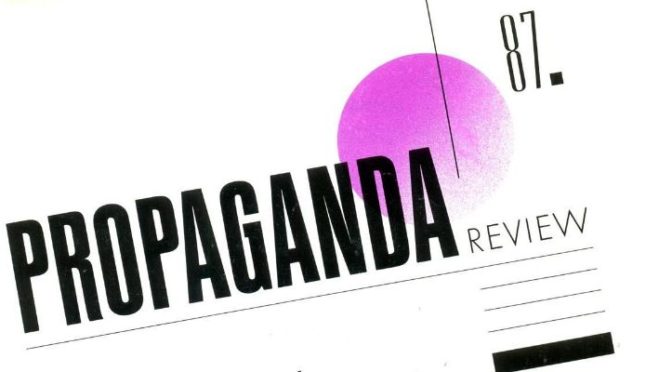Everything old is new again. One of the advantages of being a venerable organization is that your ancestors have already taken a go at issues and problems recurring today.
Propaganda Review was a Media Alliance magazine that explored techniques of manipulation, our vulnerability to them, and a society obsessed with the engineering of consent.
Sounds familiar, doesn’t it?
So, with the generous help of William Bowles, we are embarking on the project of excavating as much of Propaganda Review as we can in order to make it available for a bit of context in today’s “fake news” debate.
In this edition, you’ll hear from:
- Claude Steiner interviewing David Fenton on the PR campaign against apples treated with ALAR. “You can’t separate the
corporate ownership of the media from the way it reports things. Yet, most journalists would argue that corporate ownership has absolutely nothing to do with anything that they write. Which I think, shows how out of touch they are with how things actually operate. There is a remarkably perfected, cultural auto-pilot, where
things outside the homogeneous universe are never considered.
Our job is to press things into the public eye that just wouldn’t
get there on their own.” - Peter Dykstra on the Exxon-Valdez Oil Spill. “Possibly the least told, but most important part of the energy/ Cold War story is the curious history of the US Department of Energy (DOE). Created as a cabinet-level stepchild of the Atomic Energy Commission, the DOE’s earliest conspicuous mission was to research and promote energy alternatives Perhaps for that very reason, Presidential candidate Ronald Reagan vowed to abolish DOE if elected. Under the aegis of
James Edwards, a dentist-turned-politician who as South Carolina
Governor was a steadfast cheerleader for the Savannah River
Nuclear Complex, Reagan decimated DOE’s most progressive
programs. The Department languished for two years, then underwent a rebirth with the 1983 launching of the Strategic Defense Initiative. DOE thrived, its early visions of windmills and solar panels supplanted by billions devoted to plutonium production, nuclear weapons testing, and SDI research.” - Petra Hesse and Ted Stimpson on the world is a dangerous place; images of the enemy on children’s television. “Many people believe that conceptions of the enemy are acquired early in life, and passed on from one generation to the next; to break the cycle of enemy images and violence, we have to know as parents, educators, politicians, and journalists how to counteract these depictions.”
- John Baer on the strange origins of the pledge of allegiance. “Perhaps the time has come to see that this allegiance should be to the US Constitution and not to a piece of cloth.” •
- Stephen Ducat on the demonization of the Sandinista movement in Nicaragua. “The delirious ardor with which the Reagan administration pursued its monomaniacal campaign against
Nicaragua has puzzled many” - Brian McGin on what happened in 1941 when Nazi Rudolf Hess went to Scotland. “There are situations, Goebbels explained to an aide, which even the best propagandist in the world cannot cope with.”
[pdf-embedder url=”https://media-alliance.org/wp-content/uploads/2018/07/PR-05.pdf”]

